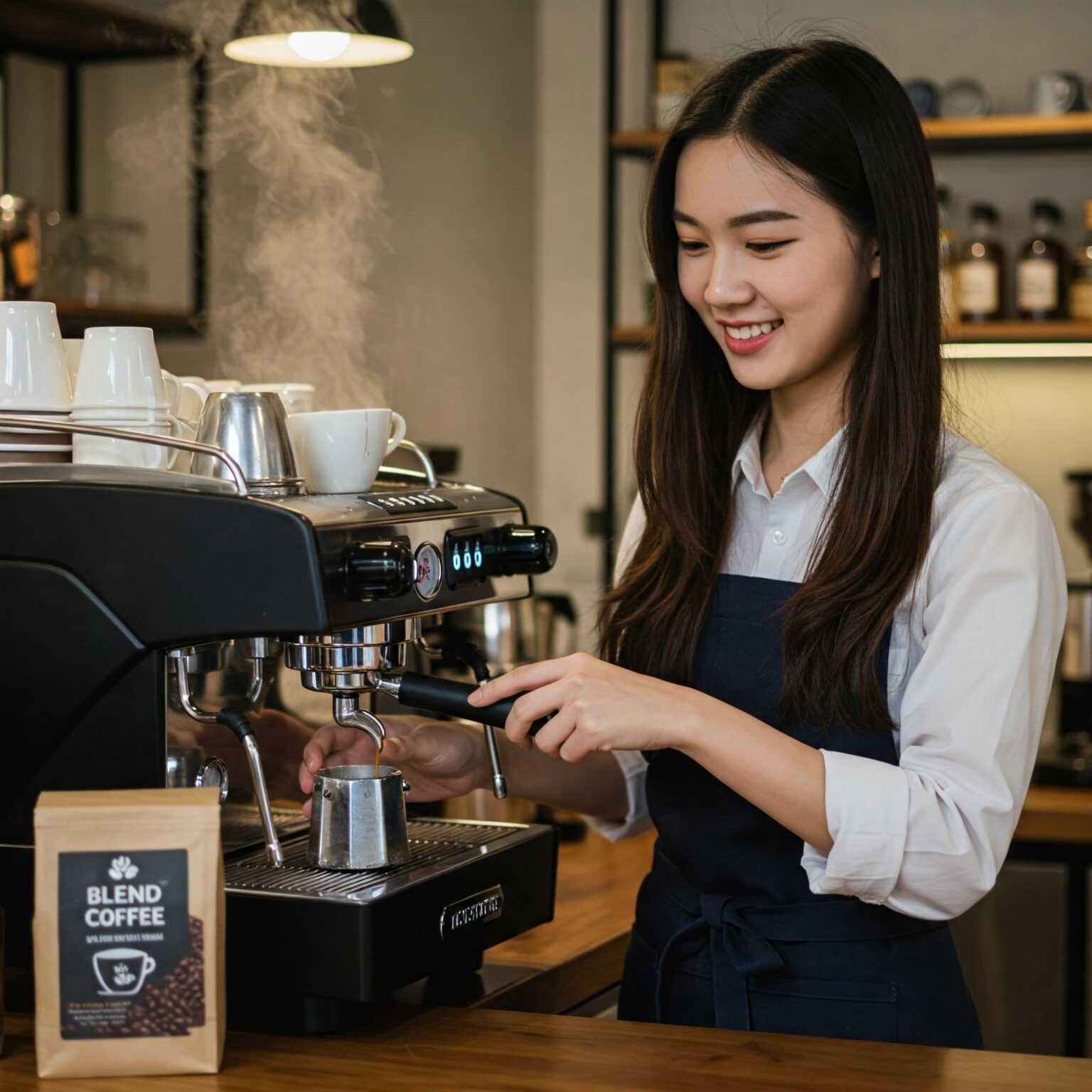Why Espresso Fans Prefer SOE Single Origin Espresso for Authenticity
Wiki Article
Comprehending Coffee Beans: the Trip From Espresso to Blended Coffee Beans

The Beginnings of Coffee: A Worldwide Viewpoint
While you might think about coffee as a contemporary staple, its origins map back centuries, intertwining with societies around the world. The story starts in Ethiopia, where legend says a goat herder named Kaldi discovered the stimulating impacts of coffee beans after noticing his goats frolicking energetically after eating them. This sparked rate of interest, resulting in coffee's spread to Arab traders that treasured the made beverage. By the 15th century, it reached Persia, Egypt, and Turkey, where coffee shops became social centers for discussion and culture.As trade courses expanded, coffee made its way to Europe in the 17th century, promptly obtaining appeal. It changed from a magical beverage right into a daily ritual, inspiring events and intellectual exchanges. Each culture added its special twist to coffee prep work, enhancing its background. This global journey highlights just how coffee connects us, transcending boundaries and uniting varied customs through an easy bean.
Cultivation and Harvesting of Coffee Beans
As coffee's journey developed, the focus shifted to the growing and harvesting of particular bean ranges, specifically those utilized for espresso. You'll discover that coffee beans usually come from Arabica or Robusta plants, each offering distinctive flavors. The perfect expanding conditions consist of high altitudes and abundant, well-drained dirt, which boost the beans' top quality.Throughout the harvest, selecting approaches differ. In some areas, employees hand-pick ripe cherries, making certain only the most effective fruit mosts likely to handling. In other areas, mechanical harvesters are made use of, especially on larger ranches. Timing is important; you desire to harvest when the cherries reach peak ripeness for maximum flavor.
When collected, the beans are gotten ready for processing, which is essential in determining their final taste. Recognizing the cultivation and collecting procedures provides you understanding right into what goes into your preferred coffee, enhancing your recognition for each and every mug.
Processing Methods: From Cherry to Bean
Since you've found out about collecting espresso beans, allow's discover just how those cherries transform right into the coffee beans you enjoy. You'll see just how various harvesting strategies impact flavor, complied with by the vital actions of fermentation and drying. Lastly, we'll break down the milling and grading process that determines your coffee's high quality.Gathering Techniques Clarified
When it comes to coffee, comprehending harvesting techniques is essential, considering that they directly influence the taste and top quality of the beans you take pleasure in. Careful choosing involves hand-picking just ripe cherries, guaranteeing you obtain the ideal quality beans. Ultimately, the selection of gathering strategy can greatly influence your coffee experience, so it's worth knowing just how those beans made it to your cup.Fermentation and Drying
After harvesting, the next actions in processing coffee beans play a substantial duty fit their flavor. You'll discover that fermentation is important, as it assists damage down the mucilage bordering the beans, enhancing their preference profile. Depending upon the method, this procedure can last from a couple of hours to numerous days, with varying results based on temperature level and humidity.Sun-drying allows the beans to take in flavors from the environment, while mechanical drying assurances constant wetness degrees no matter of climate. Appropriate drying out is crucial to prevent mold and mildew and maintain the beans' top quality, ultimately influencing your cup of coffee.
Milling and Grading Refine
As fermentation and drying established the stage for taste growth, the milling and grading process warranties that only the best coffee beans make it to your mug. This phase entails getting rid of the external layers of the coffee cherry, consisting of the parchment and husk. After milling, the beans are arranged by dimension and weight, ensuring an uniform top quality. You'll locate that grading aids determine defects and classify beans, which impacts taste and aroma. High-quality beans get a greater quality, resulting in a richer coffee experience. When rated, the beans are prepared for product packaging and delivery, preserving their special characteristics. This thorough process is necessary for delivering the remarkable preference you enjoy in every sip of your favorite brew.Toasting Techniques: Opening Taste Possible
When you roast coffee beans, the technique you pick can substantially impact the flavor profile. Recognizing the relationship between time, temperature level, and roasting methods is key to exposing the capacity of your brew. Allow's explore how these elements come together to develop the best cup.Roasting Techniques Described
While you may assume that all coffee toasting techniques produce the exact same results, the truth is that each method exposes special taste potentials in the beans. You can pick between techniques like drum toasting, air roasting, and even traditional frying pan roasting. Drum toasting utilizes a turning drum to evenly disperse warm, boosting caramelization and creating a balanced taste. Air roasting, on the other hand, circulates warm air around the beans, advertising a lighter roast with pronounced level of acidity. Frying pan toasting permits hands-on control but needs constant attention to stay clear of burning. Each approach has its subtleties, so explore different methods can assist you find the best roast that aligns with your taste preferences. Appreciate the trip of locating your ideal cup!
Impact on Flavor Account
Various toasting methods not just influence the process but also greatly affect the flavor profile of the coffee beans. When you select a light roast, you'll experience bright level of acidity and floral notes, showcasing the bean's beginning. In comparison, a medium roast balances level of acidity with SOE sweetness, frequently revealing chocolatey undertones. Dark roasts, on the other hand, highlight strong, great smoky flavors, often covering up the bean's one-of-a-kind characteristics. Each method discloses different oils and substances, causing a wide variety of flavors. By trying out various roasting styles, you can uncover which profiles resonate with your taste buds. Recognizing these subtleties aids you value the creativity behind your cup of coffee, improving your overall experience with every sip.Time and Temperature Variables
To launch the full taste possibility of coffee beans, both time and temperature during the roasting procedure play substantial duties. When roasting, you'll find that higher temperatures can swiftly create tastes, however if you rush it, you could wind up with scorched notes. On the other hand, reduced temperature levels allow for an extra gradual flavor growth, showcasing the beans' special characteristics.
Timing is just as crucial; extending the roast as well long can result in a loss of acidity and brightness, while too brief a roast may leave the beans underdeveloped. Finding that pleasant place requires practice and trial and error. By adjusting these factors, you can reveal the abundant, complex flavors hidden within each bean, creating a really remarkable coffee experience.
The Art of Blending: Crafting Unique Coffee Profiles

Beginning by selecting a base coffee that offers a strong structure. A bright Ethiopian bean can bring fruitiness, while a rich Brazilian coffee adds body.
As you blend, bear in mind that each combination tells a story. You're not just making coffee; you're creating an experience. Take your time, taste often, and appreciate the trip of discovering your signature mix - Single Origin Espresso.
Brewing Techniques: Exactly How Preparation Affects Flavor
Mixing coffee opens up a domain name of flavor possibilities, however how you make that blend can significantly influence your final cup. On the other hand, a pour-over highlights the coffee's clarity and illumination, best for showcasing delicate notes.Espresso, with its high stress, generates a focused shot that highlights sweet taste and crema. If you favor a lighter mixture, take into consideration a cool brew method; it produces a smooth, much less acidic taste.
Eventually, testing is essential. Changing variables like water temperature level, grind size, and brew time can transform your coffee's profile. Accept the art of brewing to find the tastes hidden in your coffee blends. The right approach can elevate your experience to brand-new heights.
The Future of Coffee: Sustainability and Innovation
As the coffee market advances, sustainability and development are ending up being important for resolving environmental difficulties and conference customer demands. You'll see that more coffee firms are adopting environmentally friendly methods, from sourcing beans fairly to implementing lasting farming methods. These changes not only help the planet but additionally improve the top quality of the coffee you delight in.You could see developments like eco-friendly packaging and water-saving brewing approaches that minimize waste. Advanced modern technology, such as blockchain, is also coming to be popular, guaranteeing openness in the supply chain, which permits you to trace your coffee back to its origins.
On top of that, spending in neighborhood communities and sustaining farmers with fair profession efforts cultivates a more sustainable coffee ecological community. As you sip your next cup, bear in mind that your selections can contribute to a brighter future for coffee. By choosing lasting brands, you're not simply enjoying a beverage; you're making a favorable influence on the globe.
Often Asked Inquiries
What Is the Distinction In Between Arabica and Robusta Beans?
Arabica beans are smoother, sweeter, and have a greater level of acidity, while robusta beans are more powerful, extra bitter, and contain even more caffeine. When making your coffee., you'll see these distinctions in flavor and fragrance.Just How Does Elevation Affect Coffee Bean Flavor?
Altitude influences coffee bean taste significantly. Higher altitudes generate beans with brighter acidity and complex tastes, while lower elevations usually generate beans that are heavier and less nuanced. You'll notice these distinctions in your cup!What Are the Wellness Advantages of Alcohol Consumption Coffee?
Drinking coffee can boost your power, boost psychological emphasis, and even boost physical performance. It's rich in antioxidants, may decrease the risk of specific conditions, and can promote a much healthier metabolic process when consumed in small amounts.Can Coffee Beans Be Recycled for Developing?
Yes, you can recycle coffee beans for brewing, but the taste could be weaker. If you enjoy exploring, try reusing them in various ways, like cool brews or including to healthy smoothies for an added kick.How Should I Shop Coffee Beans for Freshness?
To maintain your coffee beans fresh, keep them in an airtight container in a trendy, dark place. Stay clear of revealing them to light, dampness, or heat, as these factors can rapidly deteriorate their taste and aroma.Recognizing Coffee Beans: the Journey From Espresso to Blended Coffee Beans.
Now that you have actually learned regarding gathering espresso beans, allow's explore just how those cherries transform right into the coffee beans you love.When you roast coffee beans, the technique you select can significantly influence the taste account - Single Origin Espresso.While you may believe that all coffee toasting approaches generate the very same outcomes, the truth is that each technique exposes special taste possibilities in the beans.Various toasting methods not only influence the process however also substantially affect the taste profile of the coffee beans
Report this wiki page